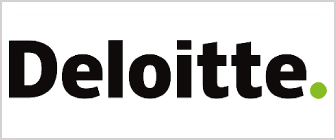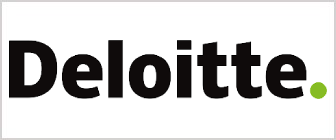Jennifer Deutsch answers questions about the United States' recent legislative changes
1. What is the most significant change to your region/jurisdiction’s tax legislation in the past 12 months?
The most significant event is the COVID-19 global disruption and the resulting legislation and impact to the manner in which business is conducted, both our (Deloitte Tax LLP) clients and our own. The resulting legislation and economic impacts are requiring our clients to not only react to opportunities based upon the legislative incentives and economic measures but also how to keep/make their operations sustainable in a completely new environment.
2. How do you anticipate that change impacting your work and the market moving forwards?
Prior to the pandemic, our (Deloitte Tax LLP) clients were already dealing with increasingly swift legislative changes, a tax authority and organizational shift to digital/cloud and pressures on adding value to the organization in light of an increasing complex and competitive landscape for themselves in our global economy. Post-pandemic, those pressures have increased and added sustainability as a more urgent necessity given the ongoing resulting health crisis or considerations in many areas around the globe. These factors all add up to an imperative to address our clients’ challenges in creating a sustainable tax operating model, and our need to innovate both with them and inside our operations to create a better future state for tax.
3. What impact do you see the COVID-19 pandemic having on your work directly and on the wider tax environment, in both the short and long term?
In the short term, there seems to be an increased requirement of additional innovation in approaching our (Deloitte Tax LLP) interactions with our clients while everyone is working remotely. That doesn’t mean everyone is comfortable or engaged in this new dynamic. Many professionals are dealing with disruption in all aspects of their lives and as a result, everyone needs to pivot and be creative in figuring out how to meet short-term objectives. The wider tax environment is essentially the same. Our focus is however shifting to consider longer-term considerations around the future of work for tax. Many companies are accelerating the digital transformation to create that sustainable function sooner than otherwise planned, which is requiring additional creativeness, solutioning and flexibility in charting the path to align the tax function’s digital transformation to that of the broader organization.
4. Given the likely long-term implications of COVID-19 on things like remote working and digital retail, how do you see tax technology developing to accommodate this new reality and where do you think the next area of focus might be?
Digitization is accelerating. As the single biggest user of data in an organization, as the organization goes, the tax goes. From Enterprise Resource Planning (ERP) solutions moving to the cloud, to real-time reporting requirements tax has a continual list of opportunities for technological advancements to support not only remote working but to drive the value it can bring to an organization through credits and incentives, tax planning, efficiency and effectiveness gains. Determining that tax plays a role in those initiatives while driving its own transformation roadmap is not only an area of focus but an imperative as this will enable the current professional’s ‘lifetime’ in tax. This is because the organizational adoption of such technologies is viewed as a ‘once in a lifetime’ opportunity.
5. What potential other legislative changes are on the horizon that you think will have a big impact on your region/jurisdiction?
Globally, continued economic stimulus legislation will be of interest to our (Deloitte Tax LLP) clients as they evaluate their businesses–supply chain changes, business models, competitive landscapes, etc. All of these potential benefits or regulatory changes require a reaction from the tax organization to both internal reporting, i.e. C-Suite and board inquiries, and external interested parties, i.e. investors, competitors, vendors and customers.
Second, additional regulatory change involving tax reporting has continued to drive companies toward real-time reporting. Regulatory changes involving disclosure requirements, assessment, reconciliation and other real-time data reporting trends have continued without a slowdown in sight. The foundation of these regulatory changes is rooted in an organization’s ability to record, manage and learn from the data. The move to digital, cloud and other technologies requires a data approach at its core.
6. What are the potential outcomes that might occur if those changes are implemented?
As mentioned above, the global economic situation is requiring many, if not all, organizations to consider how they operate in their existing markets, where their opportunities might be in the future and how they blend those changes with their existing responsibilities. The tax function is not immune to that assessment and quite often plays a pivotal role in assessing impacts to the business.
On the real-time reporting trends, companies will face an increasing risk, ranging from fines and penalties to increased audit activity, if they are unable to meet the real-time reporting requirements either already implemented, those being phased in and in some jurisdictions, those yet to be enacted. Assessing the readiness, developing the sustainable processes and identifying the appropriate technology tools to meet these requirements is critical, and will drive the level of risk a company is willing to accept or identify the best mitigation strategies.
7. Do you think that change will have a positive effect on both your practice and the wider regional/jurisdictional market?
Yes, the intersection of all the pressures on the tax function of today requires tax executives to think holistically and plot the steps tactically to plan for their organizations, both in the short term (around 0-2 years) and in the longer term (2+ years). The ability of a tax function to assess where it stands today and what it needs to operate in the future, and then appropriately allocate resources to achieve that vision, is critical. Mapping out a path helps the tax leader to set their vision, quantify and communicate the benefits of the chosen path to the C-Suite and attract the talent to execute. I expect a significant increase in the discussions and innovation needed to support tax leaders in that exercise.
8. What legislative changes would you like to see be implemented that you think would have the most positive effect on your practice and the wider regional/jurisdictional market?
Given the current economic situation, it will be interesting to see if there is a resurgence of transaction-based tax paradigms and away from income-based tax structures. For large corporations, the level of complexity can actually increase the demands on reporting due to the sheer volume of jurisdictions in play for any global organization. In many cases, transformation of the transaction-based tax processes was under way in light of the move to cloud. Organizations who are considering the role tax plays in any organizational moves will have a leg up, should that trend continue.
9. Do you think something like that is likely to be implemented in the near future?
The future of work and translating that into tax technology is a significant area of focus for tax executives.
10. What have been the biggest developments in tax technology and where do you think the next area of focus might be?
The concept of the future function has driven a focus into leveraging technology for two primary areas. First, the potential for artificial intelligence, natural language processing and other tools to assess, classify and report the various activities under tax logic. Second, using technology to ‘close the gaps’ that exist in today’s tax function–inclusive of data management (data wrangling), workflow and analytics and visualization tools that tie the functions together for the tax executive. In many cases, tax can act as a use case or early adopter in these areas where a corporation may have an IT- or finance-driven initiative, given the trends discussed above as well as the roadmap for transformation.


